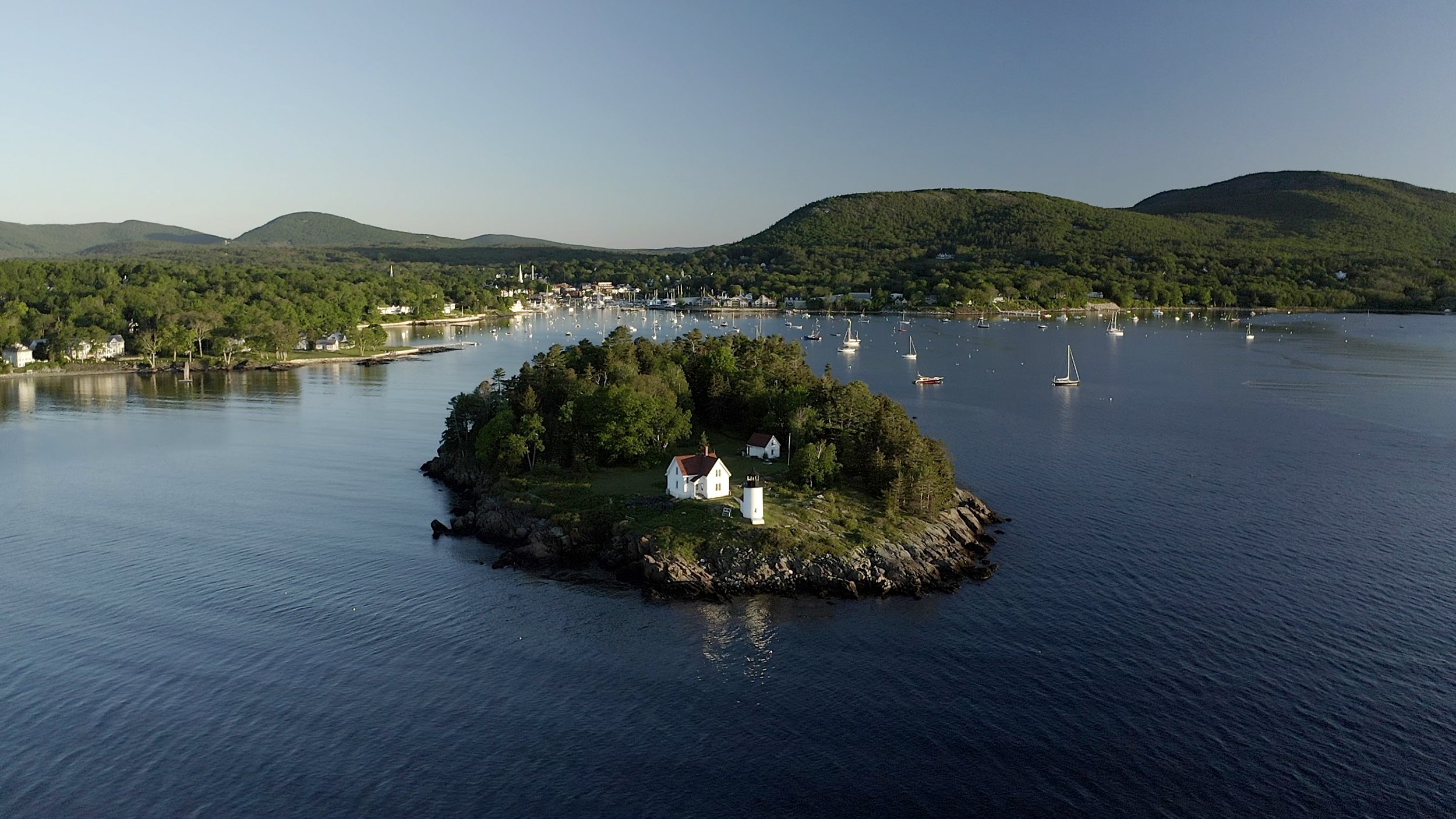History of
Curtis Island Lighthouse
Abridged from
“A Brief History of Curtis Island Light
1835 - 2024 and Plan for Its Historic Restoration”
by Rhonda Ryznar and Michael Skaling
Early History and Name
Curtis Island is nestled at the entrance to Camden Harbor, Maine. This approximately 5 acre isle has served as a breakwater from the rough seas of Penobscot Bay, and has provided a welcoming and safe harbor for maritime travelers for hundreds of years.
Curtis Island was initially known as Mark Island to early explorers. Then, around 1768, the island became known as Negro Island, named after a black sailor who later lived there and among the Penobscot tribal nation. The island remained so named for 166 years until, in 1934, it was renamed “Curtis Island” in honor of Maine native, publisher, and benefactor of Camden, Cyrus H.K. Curtis.
The First Lighthouse Tower
Local settlers used the island for livestock and crops until it became privately owned in the early 1800s. As the new nation of the United States turned its attention to securing its coastline and regulating maritime commerce, the island was sold to the nascent government. In 1834, under the presidency of Andrew Jackson, Congress appropriated $4500 “for building a lighthouse on a proper site on Negro Island” in Camden Harbor, along with a keeper’s dwelling. The lighthouse tower was 20 feet to its lantern deck and used eight oil lamps with 14-inch reflectors. This produced a fixed white light for navigation.
1836 early watercolor of the first Negro Island Light by John Locke, age 14
1859 photograph of Negro Island Lighthouse by Fitz Henry Lane
1889
New Lighthouse Structures Built
Several modifications were made to the lighthouse tower and dwelling through the 1800s. Then, between 1889 and 1896, all structures on the island were demolished and replaced completely with new and “modern” buildings. The keeper’s dwelling was replaced with a wood frame house using the same foundation, and the light tower, originally built of rubblestone, was replaced with brick. Also in this period a barn, boat house, slipway, dock, coal shed and new privy and covered walkway were built, and In 1886 a 1000-pound fog bell was put in place, later mechanized.
The new lighthouse tower was 30 feet in height and 12 feet in diameter. The 1857 Fourth Order Fresnel Lens was transferred to the new tower and had a focal plane of 52 feet and a light beam range of six nautical miles. Later, the light was changed from a fixed white to a fixed green, and today, the Curtis Island light is a green 4-second occulting light.
Boathouse, slipway and dock
New 1,000 pound fog bell
1973
National Register of Historic Places
In 1973, Curtis Island Light Station was added to the National Register of Historic Places and the Coast Guard transferred ownership of all but the light tower to the Town of Camden. Between 1973 and 2022 Camden deployed annual caretakers, including the Conover family for the past 42 years, who welcomed hundreds of visitors each year during the summer months.
In 2022 dry rot was found in the sills of the keeper’s house and the December 2022 storm caused extensive roof and interior plaster damage. The roof has been temporarily repaired and further damage mitigated. The roof, along with fascia boards, gutters, and trim will need to be replaced.
The “modern” light station shortly after being rebuilt in the late 1800s – much like it is seen today.
2023 - 2024
Conditions Assessment and Historic Preservation Plan
In 2023 the Curtis Island Lighthouse Foundation was established as a 501(c)(3) non-profit corporation with a mission to historically restore the Curtis Island Light Station and to develop a perpetual maintenance trust fund, all of this in partnership with the Town of Camden. The vision is a full restoration, improved access for the community, a comprehensive maritime history of the island, and governance to protect the island’s fragile environment.
Beginning March 2024, the Foundation, along with financial support from the Town, will conduct an Historic Buildings Conditions Assessment and write an Historic Preservation Plan. These documents will be the “foundation blocks” for the Fund Development Plan, the Historic Preservation Plan, and the beginning of all restoration and preservation activities. Depending on how quickly funds are raised, the full restoration will likely take 2-5 years.
Light Keeper's House after December 2022 storm






